Articles
China - Southeast Asia

China - Southeast Asia
September — December 2023Beijing Moderates Criticisms Selectively
Beijing in this reporting period moderated often shrill rhetoric of the past two years criticizing Joseph Biden administration advances and regional governments cooperating with the US. Emphasizing China’s positive contributions to regional economic growth, Beijing stressed its flexibility, said to be different from Washington in not pressing regional states to choose between the US and China, even as it demonstrated ambitions to develop a new regional and global order favorable to itself. Nevertheless, glaring exceptions included egregious pressures to compel deference to China’s claims in the South China Sea, harsh criticism of the Philippines and Japan cooperating closely with the United States, as well as authoritative foreign policy statements giving regional governments little choice between two paths forward: cooperation with an avowedly beneficial China or America’s purported exploitative, divisive and destructive initiatives. Regarding the Philippines, an unprecedented show of support by the US for the territorial claims of its treaty ally resulted in an equally unprecedented pushback from Beijing.
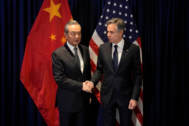
China’s recently recognized position as Southeast Asia’s leading power faces growing challenges from efforts of the Biden administration to counter Chinese ambitions and advance US regional influence. Beijing has stuck to practices of strong diplomatic engagement, economic enticement, and a range of coercive measures that have been broadly successful in the past but seem to have failed badly in the Philippines, now moving into the US orbit.
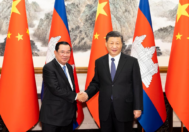
China - Southeast Asia
January — April 2023China Strengthens Regional Leadership Countering US Challenges
Southeast Asia featured prominently in Beijing’s increasingly strong international efforts to portray China as a source of strategic stability and economic growth with comprehensive global governance plans supportive of interests of developing countries and opposing the United States. These efforts intensified after the landmark 20th Party Congress in October and the 14th National People’s Congress in March. They were reinforced as Xi Jinping emerged from COVID restrictions and preoccupation with domestic matters to engage actively in summitry with leaders of Vietnam, Laos, the Philippines, Cambodia, Malaysia, and Singapore. China’s economic importance for regional countries grew as did its dominance over the contested South China Sea. Its show of force against Taiwan in April had little discernible impact on China-Southeast Asia relations, while notable US advances in military cooperation with the Philippines warranted Chinese warnings that escalated during the reporting period.
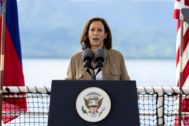
China - Southeast Asia
September — December 2022Xi Moderates to US and Others Amid Continued Competition
Southeast Asia was the center of international attention in November as regional and global leaders gathered at the G20 conference in Indonesia, which took place between the annual ASEAN-hosted summit meetings in Cambodia and the yearly APEC leaders meeting in Thailand. Acute China-US rivalry loomed large in media and other forecasts, warning of a clash of US-Chinese leaders with negative implications feared in Southeast Asia and elsewhere. The positive outcome of the Biden-Xi summit at the G20 conference and related actions eased tensions, which was welcomed, particularly in Southeast Asia, but the implications for the US and allies’ competition with China remain to be seen. Tensions over disputes in the South China Sea continued unabated. President Xi Jinping made his first trip to a major international gathering at the G20 conference followed by the APEC meeting after more than two years of self-imposed isolation in line with his government’s strict COVID-19 restrictions.
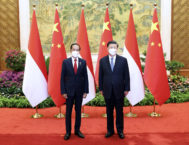
China - Southeast Asia
May — August 2022Countering US Initiatives, Taiwan Crisis Complications
Chinese enhanced activism in Southeast Asia in this reporting period focused on countering Biden administration efforts to enhance influence in the Indo-Pacific. The Chinese government intensified its depiction of the United States as disrupting regional order and portraying itself as the regional stabilizer. Beijing’s effort faced complications and uncertain prospects as Chinese military forces in August launched large-scale provocative shows of force amid strident media warnings targeting the United States over Taiwan.
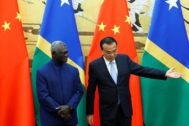
China - Southeast Asia
January — April 2022Diminished Priority As Ukraine Distracts America
Southeast Asia stopped being China’s high priority as Beijing viewed US initiatives to compete with China in the region as flagging amid preoccupation with the war in Ukraine. Chinese diplomacy added to the reasons Southeast Asian governments generally eschewed support for US-backed sanctions against Russia and carefully avoided major controversy in UN votes on the Russia-Ukraine conflict. A Chinese-Solomon Islands security deal resulted in more US and allied attention to the Pacific Islands than ever before, surpassing rare past instances of concern over interventions by the Soviet Union, Libya’s Muammar Gaddafi, and others in an area usually considered of low strategic importance.
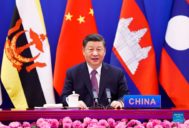
China - Southeast Asia
September — December 2021China’s Growing Influence Overshadows US Initiatives
Beijing’s extraordinary high-level attention to Southeast Asia since last year continued in the current reporting period. It culminated in President Xi Jinping presiding over a special summit he convened to commemorate the 30th anniversary of ASEAN-China dialogue on Nov. 22, which featured an array of Chinese advances. Keenly attentive to US efforts to reverse its recent decline and compete more effectively with China in Southeast Asia, Beijing has relied on ever-expanding Chinese influence in Southeast Asia to eclipse and offset US initiatives. Beijing faced a setback when Philippines President Rodrigo Duterte sharply rebuked Chinese coercion in the disputed South China Sea during the November summit. Similarly, China’s role in the political turmoil in Myanmar got noticeable pushback from ASEAN leaders as the humanitarian situation in Myanmar remains unstable.
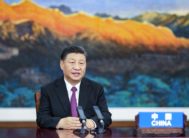
China - Southeast Asia
May — August 2021Pushing Regional Advantages Amid Heightened US Rivalry
China’s recognition of the strategic challenge posed by close Biden administration relations with the Quadrilateral Security Dialogue (Quad) powers Australia, India, and Japan reinforced Beijing’s strong efforts to preserve and expand its advantageous position in Southeast Asia in the face of rising competition with the United States. Beijing used uniformly critical coverage of US withdrawal from Afghanistan to highlight US unreliability, and attempted to discredit Vice President Kamala Harris’ Aug. 22-26 visit to the region, the highpoint of Biden government engagement with Southeast Asia. It also widely publicized evidence of China’s influence in the competition with the United States in Southeast Asia, even among governments long wary of China, like Vietnam. That effort underlined the lengths Vietnam would go to avoid offending China in reporting that Hanoi allowed the Chinese ambassador to publicly meet the Vietnamese prime minister and donate vaccines, upstaging Vice President Harris, who hours later began her visit and offered vaccines.

China - Southeast Asia
January — April 2021Beijing’s Advances Complicated by Myanmar Coup and US Resolve
Beijing confidently forecast continued advances in high-priority efforts promoting regional economic integration, ASEAN’s prominence as China’s leading trade partner, as well as strengthening supply chain connections disrupted by the pandemic and US trade and economic restrictions. Ever-closer cooperation to counter COVID-19 saw Chinese pledges add to its leading position providing more than 60% of international vaccines to Southeast Asian countries. Nevertheless, the unexpected coup and protracted crisis in Myanmar headed the list of important complications. The incoming Biden administration showed no letup in US-led military challenges to China’s expansionism in the South China Sea, while strong high-level US government support for the Philippines in the face of China’s latest coercive moves supported Manila’s unusually vocal protests against the Chinese actions. Beijing also had difficulty countering Biden’s strong emphasis on close collaboration with allies and partners, seen notably in the first QUAD summit resulting in a major initiative to provide 1 billion doses of COVID vaccines for Southeast Asia and nearby areas. The effectiveness of Chinese vaccines was now questioned by Chinese as well as foreign specialists and Beijing’s domestic demand was growing strongly, slowing donations and sales abroad.
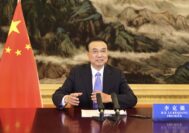
China - Southeast Asia
September — December 2020Beijing Hails Regional Integration, US Seen Sidelined
China faced a less forceful US posture in the South China Sea in this reporting period compared with earlier in 2020. Beijing took advantage of President Trump’s failure to participate in the East Asian Summit (EAS) and other ASEAN-led meetings in November. Chinese leaders depicted the United States as disruptive and out of step with what Beijing saw as an overriding trend toward regional economic integration and cooperation. They highlighted the Regional Comprehensive Economic Partnership (RCEP) agreement and ASEAN’s new prominence as China’s top trading partner, forecasting stronger regional economic growth led by China’s rapid rebound from the COVID-19 pandemic. Beijing remained on guard against US challenges, and it resorted to unprecedented trade retaliation and related diplomatic pressures to compel Canberra to change its recent moves to check Chinese interference in domestic Australian affairs, expansionism in the South China Sea, repression in Hong Kong and Xinjiang, and malfeasance in the initial handling of the COVID-19 outbreak in China. Some experts were optimistic that the Philippines and China were on the verge of agreeing on joint exploitation of oil and gas in South China Sea areas claimed by both countries, but others remained skeptical.

China - Southeast Asia
May — August 2020China Faces Stronger US Opposition in South China Sea
Beijing responded methodically to a major escalation in US challenges to Chinese expansionism in the South China Sea. Officials from Xi Jinping on down reached out to Southeast Asian countries with emphasis on growing economic relations and cooperation in countering COVID-19. Top-level officials generally eschewed public criticism of the United States on South China Sea issues, while government ministries and official and unofficial media used sometimes tough language in criticizing Washington. Overall, Beijing registered satisfaction that ASEAN adopted a neutral stance and most other states showed little sign of leaning toward the US against China.
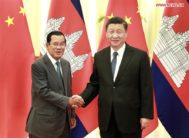
China - Southeast Asia
January — April 2020From Low Priority to High Tensions
For most of the first four months of 2020, China’s generally low priority treatment of Southeast Asia featured cooperation on the coronavirus, standard treatment of South China Sea issues, and a visit by Xi Jinping to Myanmar. However, April saw tensions rise in the South China Sea, with an increase in US criticism of Chinese actions and US military moves against Chinese challenges as well as Chinese initiatives and ongoing provocations.
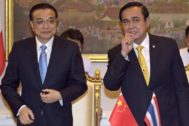
China - Southeast Asia
September — December 2019Beijing Leads Regional Agenda, Rejects US Challenges
The annual heads of government regional meetings convened by ASEAN leaders in Bangkok, topped by the 14th East Asian summit on Nov. 4, saw Beijing’s leaders set the pace for slow-moving negotiations on a China-ASEAN Code of Conduct in the South China Sea. They also celebrated the conclusion of negotiations on the Regional Comprehensive Economic Partnership (RCEP), a trade accord that excludes the United States.
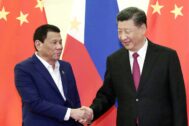
China - Southeast Asia
May — August 2019Broad Confidence, Coercive Advances, Complicated Regional Responses
Chinese officials and authoritative commentary continued their positive portrayal of China-Southeast Asia relations. Routine public assessments avowed confidence that differences over the South China Sea and challenges posed by the United States were manageable while China’s economic attraction for the region would grow. Against this favorable background, Chinese maritime forces, in moves Beijing did not publicize, challenged Vietnam and Malaysia over oil and gas drilling rights in the South China Sea. They also continued to use maritime force to challenge Manila’s efforts to construct modest infrastructure upgrades at Philippine-occupied Thitu Island.
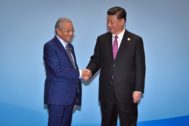
China - Southeast Asia
January — April 2019Beijing Confident Amid US, Regional Challenges
In the first third of 2019, senior Chinese leaders devoted little attention to the South China Sea and China’s relations with Southeast Asian countries. Infrequent comments depicted slow progress in negotiations on a code of conduct in the South China Sea and steady advances with its Belt and Road Initiative (BRI), offering strong economic incentives for closer regional cooperation with China. ASEAN and Southeast Asian claimants adhered to Beijing’s demands to avoid reference to the 2016 UNCLOS tribunal ruling against China’s South China Sea claims and to handle disputes through negotiations without outside interference. Routine complaints about more frequent US freedom of navigation exercises and other US and allied military operations in the South China Sea came from lower-level ministry spokespersons. Little attention was given to growing angst in Southeast Asia that intensified US-China competition compels countries to take sides, a choice undermining strategies that seek benefits from close ties with both the US and China.

China - Southeast Asia
September 2018 — December 2019Xi Jinping, Li Keqiang Advance China’s Influence, Counter US Pushback
Against the background of intensified US government pushback against Chinese economic, diplomatic, and military practices seen as adverse to US interests, President Xi Jinping and Premier Li Keqiang during visits to annual leadership meetings in the region conveyed confidence that Beijing’s economic prominence, diplomatic resolve, and military power would continue to advance Chinese influence. Xi’s November visits to the Philippines, Brunei, and Papua New Guinea (PNG), including the annual APEC Leaders’ Meeting in Port Moresby, and Li’s November visit to Singapore and participation in the East Asia Summit, ASEAN Plus Three, and China-ASEAN meetings there showed significant gains. Notably, ASEAN was pliant to Chinese preferences on South China Sea disputes and Beijing showed prominence as a rising power among the Pacific Island nations.
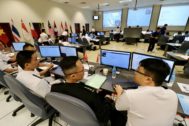
China - Southeast Asia
May — August 2018Assessing China’s Expanding Influence Amid Strong Countercurrents
China’s supporters and detractors tend to agree that China has made substantial gains in recent years in advancing Beijing’s influence in relations with Southeast Asian countries and with ASEAN. Nevertheless, the main countercurrent comes from the United States and its allies and regional partners, along with some ASEAN member states at times showing growing opposition to Chinese policies and practices. At bottom, China’s rise remains contested, the balance of influence in Southeast Asia is in flux, and the outlook is uncertain.

China - Southeast Asia
January — April 2018Xi Jinping Stresses Cooperation and Power – Enduring Contradiction?
Supported by Chinese officials and authoritative commentary, President Xi Jinping continued a moderate and cooperative posture toward Southeast Asia in early 2018, reaching a highpoint in Xi’s keynote address on April 10 at the annual Boao Forum for Asia in Hainan Province. Then, the posture switched dramatically to the surprise of many at home and abroad. On April 12, Xi appeared in military uniform addressing troops in the South China Sea participating in the largest naval review in China’s history. Perhaps signaling the United States, Vietnam, Japan, Taiwan, and others challenging Chinese activities in the South China Sea, the switch starkly showed the kind of power Beijing is prepared to use in pursuit of its national objectives. Most other Chinese actions toward Southeast Asia and involving the South China Sea in first four months of 2018 emphasized the positive, with China making major advances in relations, especially with the Philippines.

China - Southeast Asia
September — December 2017Xi Jinping, Li Keqiang Ease Regional Tensions, Consolidate Gains
President Xi Jinping’s marathon report at the 19th Chinese Communist Party Congress in October emphasized an ever more powerful and rejuvenated China strongly advancing territorial and other interests in regional and global affairs. China’s success in constructing artificial islands in the South China Sea was cited as one of Xi’s many notable accomplishments. Xi and Premier Li Keqiang adopted a more moderate and accommodating tone in November in their first foreign visits after the Congress. Xi made official visits to Vietnam and Laos concurrent with his participation at the APEC Economic Leaders Meeting in Vietnam. Li made an official visit to the Philippines in conjunction with his participation in the East Asia Summit (EAS), the ASEAN+ 3 Summit, the China-ASEAN Summit, and a meeting of the leaders of 16 nations involved in the Regional Comprehensive Economic Partnership (RCEP). Some commentators depicted the moderation as part of a broader trend in China’s foreign affairs; however, Beijing has traditionally adopted a softer approach during the annual Asia-Pacific leaders meetings, presumably to avoid unwanted controversy.

China - Southeast Asia
May — August 2017Steady Gains in South China Sea
Though periodically distracted by the North Korea crisis that intruded on deliberations during the ASEAN Regional Forum and other ASEAN meetings in Manila, China-Southeast Asia relations remained focused on the South China Sea. China and ASEAN reached agreement on a framework for a code of conduct in the South China Sea that supported Beijing interests. Modest advances in Chinese control of the territory and resources of the South China Sea continued while Beijing rebuffed Philippine and Vietnamese efforts to unilaterally drill for oil and gas in their exclusive economic zones that fall within China’s broad claim. Challenges posed by US freedom on navigation exercises and statements by US and allied leaders at odds with China’s policies and practices were dismissed as Chinese propaganda outlets highlighted Xi Jinping’s personal leadership in China’s success in the South China Sea amidst the hagiography for him prior to the 19th Party Congress that will be held this fall.
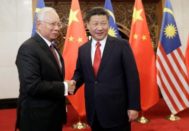
China - Southeast Asia
January — April 2017China Consolidates Control and Advances Influence
Chinese officials showed confidence and satisfaction that the cooling tensions in the South China Sea demonstrated increasing regional deference to Beijing’s interests while China’s economic importance to Southeast Asia loomed larger in a period of anticipated international retrenchment. They remained alert to possible actions by the United States, Japan, Australia and South China Sea claimant states that might upset the recent positive trajectory, but generally saw those states preoccupied or otherwise unwilling to push back strongly against Chinese ambitions. The way seemed open for steady consolidation and control of holdings and claimed rights along with a Chinese supported code of conduct on maritime activity in the South China Sea, diplomatic initiatives to promote closer ties and reduce regional suspicion of Chinese intentions, and an array of economic blandishments in line with Beijing’s ambitious Silk Road programs.

China - Southeast Asia
September — December 2016Beijing Presses Its Advantages
Chinese leaders steered relations in Southeast Asia to their advantage after successfully countering the adverse ruling of the arbitral tribunal in The Hague against China’s controversial claims in the South China Sea. The remarkable turnabout in the Philippines, from primary claimant to pliant partner, and notable restraint on the South China Sea disputes by other claimants and concerned powers allowed Beijing to seek greater regional influence. In the closing months of 2016, Beijing made major advances with visits by the Philippine president and Malaysian prime minister, Premier Li Keqiang’s participation at ASEAN and East Asia Summit meetings in September, and President Xi Jinping’s participation at the APEC Leaders Meeting in November. China adopted a stronger regional leadership role as the US failed to implement important initiatives, notably the Trans-Pacific Partnership (TPP). The main uncertainty in China’s positive outlook was President-elect Donald Trump who repeatedly criticized China, foreshadowing a less predictable and less reticent US approach to differences with China.
China - Southeast Asia
May — August 2016Countering Adverse Tribunal Ruling
Tensions over South China Sea territorial disputes dominated relations throughout the summer months of 2016. Fearing that the UNCLOS Arbitral Tribunal case would go against China, Beijing took remedial steps in the lead-up to the July 12 ruling to show resolve to domestic Chinese constituencies and to counter international pressures. With the Tribunal’s award even more negative for China than most anticipated, Beijing’s attacks on the arbitral panel and warnings to neighbors and the US intensified. They were accompanied by shows of force in the South China Sea. Given the restraint of others, after a few weeks registering intense indignation, Chinese officials and commentary also moderated their rhetoric. Whether the Chinese shift to moderation was tactical or strategic remains to be seen.
China - Southeast Asia
January — April 2016South China Sea, More Tension and Challenges
Relations in early 2016 were dominated by China’s unremitting efforts to expand its control in disputed territory in the South China Sea in the face of complaints, maneuvers, and challenges by regional governments and concerned powers. US-led challenges to Chinese expansion included expanded military presence and freedom of navigation operations accompanied by strong rhetoric from US defense leaders warning of Chinese ambitions. The constructive outcome of the US-China meeting on March 31 reinforced indications that neither Washington nor Beijing sought confrontation. Against that background, the responses of Southeast Asian governments remained measured. They followed past patterns of ambiguous hedging against China’s assertiveness, demonstrating some increased criticism of China, and greater willingness to link more closely with the US to dissuade China’s disruptive expansionism.
China - Southeast Asia
September — December 2015Limited Moderation amid Pressure and Complaints
President Xi Jinping and Prime Minister Li Keqiang led Chinese government officials in responding in measured and moderate ways to regional challenges and criticisms as Beijing defended South China Sea claims and advanced its regional influence. Moderation after a period of strong assertiveness replicates similar shifts in 2013 and 2014. Those shifts turned out to be tactical, lasting a few months each; possibly timed to avoid negative consequences for Chinese leaders facing public acrimony during the APEC, ASEAN and East Asian Summit meetings that occur each fall. Developments in 2015 suggest a more lasting period of moderation, though there is no sign of change in the Chinese positions on various disputes.
China has made significant gains in advancing control in the South China Sea. Its bold tactics involving massive dredging and rapid construction, shows of military force, deployments of its Coast Guard fleet, and movement of massed fishing vessels and large oil rigs warned of China’s power and determination to have its way. Apart from the Philippines and Vietnam, China’s Southeast Asian neighbors have adopted a low posture on the advances. Nevertheless, US rhetoric has become increasingly strident and it has deployed military forces. Japan and Australia also took steps to counter the Chinese moves. Malaysia, this year’s ASEAN chair, allowed a full discussion of the South China Sea disputes at the ASEAN foreign ministerial meetings in August. Placed on the defensive, Beijing offered words of reassurance and conciliation, emphasizing common interests with ASEAN and the US in peaceful economic development and other areas. But these tactics may have limited impact outside China.
China - Southeast Asia
January — April 2015Ambitious Economic Initiatives amid Boundary Disputes
Beijing’s recent economic initiatives with neighboring countries focus on the Asian Infrastructure Investment Bank (AIIB) and the Chinese Silk Road Fund. The Boao Forum featured a keynote speech by President Xi Jinping emphasizing the AIIB and Silk Road Fund support for infrastructure connectivity with neighbors to create a “common destiny.” Against that positive background, lower-level Chinese officials, using carefully measured language, rebuffed complaints by the Philippines, Vietnam and the US protesting China’s rapid creation and expansion of islands through massive dredging and follow-up construction of facilities. Senior leaders did respond sharply when Myanmar armed forces killed Chinese civilians in a cross-border air attack in March. In a departure from past practice, ASEAN leaders publicly registered serious concern about the land reclamation in the South China Sea.
China - Southeast Asia
September — December 2014Beijing Sets Positive Agenda, Plays down Disputes
President Xi Jinping and other Chinese leaders were actively engaged in Southeast Asia. They established or reinforced initiatives that employ Chinese wealth and economic connections to attract neighbors to China, including the Asian Infrastructure Investment Bank (AIIB) and the Maritime Silk Road through Southeast Asia. Against this background, attention to China’s territorial disputes in the South China Sea declined and efforts to stabilize relations with Vietnam moved forward. The implications of these Chinese initiatives remain hard to determine as China has endeavored before to focus on positive features of mutual development only to find changing circumstances lead to differences over sovereignty claims, overshadowing common ground.
China - Southeast Asia
May — August 2014China Advances, More Opposition in South China Sea
China’s deployment of an oil rig along with a protecting fleet in the Paracel Islands shocked the region and particularly Vietnam, the other main claimant to these islands. Large-scale dredging to create Chinese-controlled islands in the disputed Spratly Islands was also observed. These advances demonstrate how far Beijing is prepared to go in advancing its broad territorial claims in the South China Sea. Mass demonstrations in Vietnam in response to the oil rig deployment turned violent and caused widespread damage. Beijing stood firm in blaming others for negative consequences and dismissed charges that its territorial advances were counterproductive. The removal of the oil rig in mid-July, earlier than expected, was interpreted outside China as designed to reduce tensions. Major foreign policy speeches by senior Chinese leaders emphasized the positive in China’s commitment to development and peaceful coexistence.
China - Southeast Asia
January — April 2014South China Sea Advances Meet US-led Opposition
Chinese efforts to shift the emphasis toward positive economic and diplomatic initiatives and to play down South China Sea territorial disputes foundered in early 2014. Beijing’s assertiveness and advances involving fishing regulations, air defense rights, and maritime activities based on China’s vague and broad territorial claims received repeated, strong US executive branch criticism and firmer opposition in Congress. The US was joined by Japan, the Philippines, and Australia. Chinese media noted President Obama’s effort to sidestep direct criticism of China during stops in Malaysia and the Philippines in his April visit to Asia, though the Philippine-US Enhanced Defense Cooperation Agreement was widely criticized. While Southeast Asian media also registered concerns with Chinese assertiveness, most governments tended to avoid criticism. Nevertheless, Malaysia and Indonesia voiced concern about China’s broad territorial ambitions.
China - Southeast Asia
September — December 2013Beijing Shifts to the Positive, Downplays Disputes
Chinese policy and behavior toward Southeast Asian countries shifted with positive initiatives announced in carefully orchestrated moves. Beijing muted its tough stance on disputes in the South China Sea and curbed recent publicity regarding Chinese resolve to advance control in disputed maritime territory. However, there has been little evidence of substantive change in Chinese positions or ambitions. China muffled polemics with the Philippines, but strained Sino-Philippines relations seemed to explain China’s initially meager response to calls for assistance in response to the Typhoon Haiyan. Meanwhile, Beijing’s establishment of an ADIZ in the East China Sea raised angst about China taking similar action in Southeast Asia. The widely publicized deployment of China’s aircraft carrier to the South China Sea in late November for several weeks prompted commentary suspicious of Chinese intentions.
China - Southeast Asia
May — August 2013China’s Toughness on the South China Sea – Year II
China’s tough stand on maritime territorial disputes evident first in 2012 confrontations with the Philippines in the South China Sea and Japan in the East China Sea has endured into 2013. Leaders’ statements, supporting commentary, military and paramilitary activity, economic developments, and administrative advances all point to determined support of an important shift in China’s foreign policy with serious implications for China’s neighbors and concerned powers. China’s success in advancing its control of disputed areas in the South China Sea and its overall assertiveness in support of broad territorial claims along its maritime rim head the list of reasons why the new policy is likely to continue and intensify. Few governments are prepared to resist.
China - Southeast Asia
January — April 2013China’s Growing Resolve in the South China Sea
Chinese leaders reinforced the sinews of power to coerce and intimidate others from challenging Beijing’s South China Sea claims. They averred unwavering determination to defend and advance the claims and uphold China’s sovereignty and territorial integrity. At the same time, they continued to emphasize China’s broad commitment to a path of peaceful development and expanding mutually beneficial relations with neighboring countries, the US, and others. In effect, they sustained the pattern of the past year, which established a choice. Those countries that pursue policies and actions at odds with Chinese claims will meet extraordinary coercive and intimidating measures; those that mute opposition or acquiesce regarding Chinese claims are promised a peaceful and mutually beneficial relationship with a more powerful China.
China - Southeast Asia
September — December 2012China Gains and Advances in South China Sea
China’s efforts to maintain recent gains and further strengthen its South China Sea maritime territorial claims dominated China-Southeast Asia relations during the final months of 2012. Aggressive patrols by maritime security administration and fishing fleets along with diplomatic initiatives and administrative measures were supported by Chinese media commentary that emphasized patriotism and the validity of China’s sovereignty claims. Diplomatic initiatives included several high-level exchanges that emphasized the promise of increased beneficial relations for those who support or acquiesce to Chinese territorial claims. Meanwhile, ASEAN remained in disarray and the prospect for moving forward on a binding code of conduct in the South China Sea seemed unlikely.
China - Southeast Asia
May — August 2012China Muscles Opponents on South China Sea
The primary focus of attention in the relationship over the summer was the ongoing dispute over territorial claims in the South China Sea as China set forth implicit choices for the Southeast Asian disputants and others with an interest in the region. Two paths – one focused on a demonstration of China’s growing power and the other on positive aspects of Chinese engagement with Southeast Asia – are emerging as China continues to define its response to the conflict. Meanwhile, ASEAN struggled with finding a sense of unity in the face of disagreement among members regarding the territorial disputes. Elsewhere, China sought to reaffirm its friendly relations with Myanmar while seeking reassurance that the leadership in Naypidaw remained committed to previously agreed-upon projects.
China - Southeast Asia
January — April 2012Hu Visits Cambodia as South China Sea Simmers
Chinese interchange with Southeast Asia featured President Hu Jintao’s visit to Cambodia. The unusual attention was related to China’s efforts to manage disputes with claimants in the South China Sea and Cambodia’s appointment as the chair of ASEAN. Playing host at the Boao International Forum, Vice Premier Li Kejiang supported Hu’s emphasis on managing disputes diplomatically. Chinese leaders also endeavored to solidify relations with officials from several regional governments, emphasizing the importance of growing economic ties. Chinese commentary generally supported China’s South China Sea claims in carefully measured terms, though a widely publicized faceoff between Chinese and Philippine ships over fishing rights in a disputed area was accompanied by strong warnings to the Philippines as well as Vietnam, and repeated charges against the US along with accusations against Russia and India.
China - Southeast Asia
September — December 2011Setback in Bali, Challenges All Around
China endeavored to win regional influence and goodwill by emphasizing reassurance and mutually beneficial relations with Southeast Asian counterparts. Nevertheless, it failed to keep the issue of the South China Sea off the agenda at the East Asia Summit as Prime Minister Wen Jiabao was placed on the defensive and compelled to defend China’s approach to resolving territorial and maritime security issues related to China’s broad claims and sometimes assertive actions. Official Chinese commentaries reacted to the setback in Bali with criticism directed at the US, but they tended to avoid hyperbole sometimes seen in unofficial Chinese media. Official commentaries were measured as they depicted various economic, political, and security initiatives during President Obama’s trip to the region as challenges to Chinese interests. They also registered opposition to initiatives by Japan and India regarding Southeast Asia and the South China Sea that were seen as at odds with Chinese interests. Myanmar’s decision to stop a major hydroelectric dam project being built by Chinese firms added to China’s challenges and complications as it raised questions about China’s influence in the country while Myanmar’s new civilian government tried to improve relations with the US and other powers.
China - Southeast Asia
May — August 2011Managing Rising Tensions in the South China Sea
The moderation and reassurance seen in the public posture of top-level Chinese civilian leaders in their attentive interaction with Southeast Asian countries in the first third of the year gave way to rising tensions and widely publicized disputes centered on differing claims in the South China Sea. Senior Chinese officials portrayed China as reactive and defensive in the face of increasing encroachment on the part of Vietnam and the Philippines in particular, and what they saw as self-serving meddling by the US. Despite often reassuring words, the pattern of Chinese behavior in disputed areas in recent months undermined regional and broader international sympathy for China’s position. Vietnamese and Philippine oil exploration vessels met with intimidation by Chinese patrol vessels, and in the case of Vietnam, repeated damage to underwater survey gear. Some Vietnamese fishermen were beaten by Chinese authorities, and Philippine fishermen were shot at by Chinese patrol vessels. Based on available reporting, the various incidents followed a common practice of China using superior power and coercion to pressure and force perceived intruders to retreat.
Philippine and Vietnamese leaders were unusually outspoken in disputing Chinese actions and claims. Their efforts to mobilize support for a more unified effort in ASEAN to encourage China to moderate its actions and claims were duly criticized by Chinese official media. Also criticized were efforts to bring the disputes before the United Nations and to seek stronger support from the US and other concerned powers.
Some international media and experts forecast rising tensions leading to military conflict, but all sides strove to balance the public disputes and protests with active diplomacy to avoid conflict. Vietnamese and Philippine leaders, while condemning Chinese policies and practices, stayed in close contact with Chinese officials and engaged in positive negotiations and other interchanges. ASEAN and China reached a largely symbolic but nonetheless important agreement, establishing guidelines for implementing the 2002 ASEAN-China Declaration on Conduct of Parties in the South China Sea. The US and China carried out their first official dialogue dealing with Asia-Pacific issues including the South China Sea. Secretary of State Hillary Clinton followed her active participation at the ASEAN Regional Forum (ARF) in Indonesia during July with a special meeting with State Councilor Dai Bingguo in China. Chinese Defense Minister Liang Guanglie paid the first visit by a Chinese official of his rank to the annual Shangri-La Dialogue in Singapore in June, where he engaged in discussions on the South China Sea and consulted with US Defense Secretary Robert Gates. South China Sea issues also were a feature of commentary by US Chairman of the Joint Chiefs of Staff Adm. Michael Mullen and his Chinese counterpart, Gen. Chen Bingde, during Mullen’s visit to China in July.
China - Southeast Asia
January — April 2011China Reassures Neighbors, Deepens Engagement
Following last year’s strong Chinese criticisms of US and regional moves seen directed against Chinese policies in Southeast Asia, the reassuring message of good neighborliness and cooperation that Chinese leaders and commentary reverted to at the end of 2010 continued into 2011. The shift was reflected through more positive attention to Southeast Asia and other neighbors, seeking to advance extensive Chinese engagement, especially rapidly growing economic interchange, while endeavoring to play down differences over territorial disputes and other questions. Wariness remained over US policies and practices, but disputes were registered less frequently and in less strident tones than in much of 2010. The treatment was consistent with the improvement in China-US relations registered in Chinese commentary coincident with the prelude and aftermath of President Hu Jintao’s January visit to Washington.
In contrast with the assertiveness and truculence seen in much of the previous year, China’s handling of issues in the South China Sea remained moderate, although it showed few signs of compromise, seeking instead to “shelve” differences or engage in protracted diplomacy. China duly countered actions and positions by other disputants, notably the Philippines and Vietnam. US officials reported that the Chinese Navy had become less assertive in shadowing US Navy ships operating in contested waters along China’s rim. There were few disclosures regarding the results of Chinese consultations with ASEAN representatives seeking to implement a code of conduct in the disputed South China Sea. Meanwhile, China endeavored to solidify relations with neighboring Myanmar by sending a senior Communist Party leader to the country’s capital in April, the first foreign leader to visit Myanmar following the establishment of the newly elected civilian government there.
China - Southeast Asia
October — December 2010China Reassures Neighbors, Wary of US Intentions
Following last quarter’s strong criticisms of US and regional moves seen directed against Chinese policies, Chinese leaders and commentary this quarter reverted to a reassuring message of good neighborliness and cooperation. Senior leaders interacted constructively and official Chinese media gave repeated emphasis to positive and mutually beneficial relations. Wariness of US policies and practices was registered in lower-level commentaries while Chinese officials interacted in business-like ways with US counterparts over regional issues. China consulted with ASEAN representatives seeking to implement a code of conduct in the disputed South China Sea, and a working group meeting was held in Kunming, China on Dec. 21-23. Handling of issues in the South China Sea was more moderate than the confrontational approach witnessed in Chinese actions and publicity over fishing and other rights in disputed waters in the East China Sea and the Yellow Sea. On the other hand, even reassurances underlined a determination to rebuff violations of China’s “core interest” in protecting territorial claims. Some military exercises and enhanced patrols by Chinese ships also were noted in the South China Sea. Meanwhile, China’s positive reaction to the November elections in Myanmar was in line with longstanding Chinese support for the authoritarian military leadership.
China - Southeast Asia
July — September 2010US Interventions Complicate China’s Advances
China was on the defensive this quarter, reacting to interventions by the US, including a notable statement by Secretary of State Hillary Clinton at the annual ASEAN Regional Forum (ARF) meeting in Hanoi regarding the South China Sea. The ARF meeting also saw a new US commitment, backed by ASEAN, to participate actively in the East Asian Summit, raising the profile of that regional body over China’s preference for Asian-only regional groups. Further complicating China’s regional calculus were prominent advances in US relations with Vietnam shown during celebrations of a US-Vietnam anniversary in August that involved exercises with a US aircraft carrier deployed near disputed regions of the South China Sea. Chinese officials and commentary in Chinese media at first countered that the US actions were self-serving and destabilizing. Those attacks meshed with public Chinese attacks on concurrent US military exercises with South Korean forces in reaction to North Korea’s sinking of a South Korean warship. Later, some Chinese commentary dissented from the harsh public approach, and by the end of the quarter, the criticism of the US and others over the South China Sea disputes and other issues subsided. For the time being at least, it appeared that China will remain focused on publicly stressing trade and reassuring diplomacy in Southeast Asia, while defending its territorial claims and continuing to build military capabilities.
China - Southeast Asia
April — June 2010Senior Officials Visits; South China Sea Tensions
Chinese Premier Wen Jiabao traveled to the remote Myanmar capital during a swing through Asia in May and June, marking the first official visit by a Chinese premier in 16 years. Wen had planned to visit Brunei, Myanmar, and Indonesia in April but was compelled to cancel that trip due to a major earthquake in Qinghai province. Vice President Xi Jinping advanced Chinese relations with a visit to Australia, New Zealand and Laos in mid-June. Chinese officials and authoritative media generally avoided taking sides in the deepening and increasingly violent internal crisis in Thailand. A variety of reporting and private disclosures by Vietnamese officials indicated more serious Sino-Vietnamese frictions over disputed claims in the South China Sea than previously indicated. Maneuvers by Chinese naval forces over disputed territories and related claims caught the attention of regional observers and the US, deepening concerns regarding Chinese objectives.
China - Southeast Asia
January — March 2010Trade Agreement Registers China’s Prominence
The China-ASEAN Free Trade Agreement (CAFTA), inaugurated on Jan. 1, marked the highlight of a quarter featuring otherwise slow Chinese-Southeast Asian interaction during the winter months. Premier Wen Jiabao did mention the trade accord in his report to the National People’s Congress in March, but official Chinese media accounts of interviews and commentary by Foreign Minister Yang Jiechi this quarter did not mention ASEAN or Southeast Asia in inventories of Chinese foreign policy priorities in 2010. In a visit receiving low-keyed and delayed treatment in official Chinese media, State Counselor Dai Bingguo, China’s senior foreign policy expert, traveled to ASEAN headquarters in Jakarta to give a speech in late January that highlighted the positive aspects of Chinese-ASEAN relations as well as important elements in China’s policy in Asia. Included in foreign assessments of China’s rising prominence in Southeast Asia was a hearing by a US congressional commission in February featuring views of two US administration officials and eight experts offering mixed conclusions. Chinese statements this quarter expressing strong differences with the US thus far have not shown much impact on Chinese relations with Southeast Asia.
China - Southeast Asia
October — December 2009ASEAN and Asian Regional Diplomacy
The last quarter of 2009 featured high-level Chinese leadership diplomacy with individual Southeast Asian countries, ASEAN, and Asian regional multilateral groups. Salient meetings involved the ASEAN Plus 1 and Asian leadership summits in Thailand in October, a presidential visit to Malaysia and Singapore, including the APEC leaders meeting in Singapore in November, and high-level visits to Australia in late October, and Myanmar and Cambodia in December. Chinese official media commentary showed some concern over recently heightened US and Japanese diplomatic activism in the region. The South China Sea disputes and military tensions along the China-Myanmar border were much less prominent than earlier in the year.
China - Southeast Asia
July — September 2009Myanmar, South China Sea Issues
Myanmar’s military offensive against armed militias of minority groups along the border with China disrupted the status quo that had prevailed along the frontier for the past two decades and complicated the extensive Chinese interests that have developed in the border region during this period. Frictions over territorial claims, fishing, and surveillance among China, Southeast Asian countries, and the U.S. over the South China Sea were less prominent than in recent quarters. China signed an investment agreement with ASEAN members marking the completion of the China-ASEAN Free Trade Area, which is to go into effect on Jan. 1, 2010. Chinese commentary joined other regional media in highlighting, with some reservations, the prominence of U.S. Secretary of State Hillary Clinton and the more activist U.S. regional agenda at the ASEAN Regional Forum Foreign Ministers’ Meeting.
China - Southeast Asia
April — June 2009Ferment over the South China Sea
The highlight of China’s relations with Southeast Asia this quarter was continued maneuvering by China and Southeast Asian claimants over disputed territory and related economic claims in the South China Sea. Last quarter’s widely publicized face-off between the U.S. surveyor ship USNS Impeccable and harassing Chinese vessels was followed by incidents and commentary this quarter that underlined China’s view of an important U.S. role in challenging Chinese maritime claims in Southeast Asia. Chinese official statements and commentary and the actions by Chinese defense and security forces underlined a firm Chinese position in support of territorial and resource rights disputed by some Southeast neighbors and the U.S. Meanwhile, the pace of Chinese diplomacy picked up with economic support to Southeast Asian neighbors weathering the decline in trade and investment during the ongoing global economic recession along with visits and interaction with senior Southeast Asian leaders.
China - Southeast Asia
January — March 2009South China Sea, Economic Issues
Southeast Asian and broader international attention focused in March on the confrontation between five Chinese government ships and the U.S. surveyor ship USNS Impeccable in the South China Sea near Hainan Island. U.S. and Chinese protests and related media commentary highlighted for Southeast Asian audiences a pattern of U.S. surveillance to learn more about China’s growing military presence and activities in the area, and a pattern of China’s unwillingness to tolerate such actions in areas where it claims rights that are disputed by the U.S. and other naval powers. The protests and commentary provided a vivid backdrop for China’s continued efforts to claim and defend territory in the South China Sea that is also claimed by Southeast Asian nations. Meanwhile, there was little good news on the economic front as China’s international trade and economic interchange with Southeast Asia continued to fall rapidly. Chinese diplomatic and political attention to the region remained low during the quarter.
China - Southeast Asia
October — December 2008Economic Concerns Begin to Hit Home
Asian commentators who asserted that China and its neighbors could ride out the economic crisis in U.S. and Western financial markets appeared in retreat during the quarter as the impact of the financial turmoil and recession in America and Europe began to have a major effect on China and the region’s trade, manufacturing, currency values, and broader economic stability. The hope that China could sustain stable growth independent of the U.S. and Europe and thereby provide an engine of growth for export-oriented Southeast Asian countries was dented by Chinese trade figures that nosedived in November, especially Chinese imports, which fell by 18 percent. The financial crisis also dominated the discussion at the ASEM summit in October. Meanwhile, China continued to pursue infrastructure development projects with its neighbors to the south, resolved the land boundary dispute with Vietnam, and signed a free trade agreement with Singapore. Talk of a planned Chinese aircraft carrier caused some controversy, but on the whole assessments of China’s rise were notably more balanced than in the past.
China - Southeast Asia
July — September 2008Small Advances, Troubles with Vietnam
Chinese relations with Southeast Asia were overshadowed for most of the quarter by Chinese leadership preoccupations with the 2008 Olympic Games and various crises involving toxic Chinese milk supplies, turmoil in U.S. and international financial markets, leadership uncertainty in North Korea, and the Russia-Georgia war. Although official Chinese media highlighted President Hu Jintao’s meetings with Southeast Asian and other world leaders at the Beijing Olympics, he and other top leaders did not travel to Southeast Asia except for the foreign minister’s attendance at the ASEAN meetings in Singapore in July. New troubles emerged with Vietnam, notably over oil exploration in the South China Sea. The recent pattern of Chinese, Japanese, and South Korean leaders meeting independent of ASEAN, despite their continued avowals of ASEAN’s “leadership” in East Asian regional matters, paused when Japanese officials announced the postponement of a planned summit among the three northeast Asian powers in September on account of the resignation of Japan’s prime minister.
China - Southeast Asia
April — June 2008Cyclone, Earthquake Put Spotlight on China
Cyclone Nargis briefly put China in the international spotlight as Asian and world leaders sought help from Myanmar’s main international backer in order to persuade the junta to be more open in accepting international assistance. The massive Sichuan earthquake of May 12 abruptly shifted international focus to China’s exemplary relief efforts and smooth cooperation with international donors. Chinese leadership attention to Southeast Asia this quarter followed established lines. Consultations with Chinese officials showed some apparent slippage in China’s previous emphasis on ASEAN playing the leading role in Asian multilateral groups.
China - Southeast Asia
January — March 2008Incremental Progress without Fanfare
Preoccupied this quarter with key decisions on appointments, budgets, and government reorganization in the lead-up to the 11th National People’s Congress while facing serious disruption caused by February snowstorms and instability in Tibet during March, senior Chinese leaders had little time for travel to or substantial interaction with Southeast Asia. Chinese economic relations with the region moved forward, defense relations with Singapore and Indonesia advanced, and China and Vietnam seemed to calm disputes over territorial claims in the South China Sea.
China - Southeast Asia
October — December 2007Singapore Summits, Harmony, and Challenges
The highlight of this quarter was Prime Minister Wen Jiabao’s active agenda in regional summits coinciding with the ASEAN Plus China, ASEAN Plus Three (with Japan and South Korea) and East Asia Summit meetings in Singapore in November. Chinese officials adhered to the line of the 17th Chinese Communist Party (CCP) Congress emphasizing harmonious relations with Southeast Asian and other countries, but ran across some difficulties involving Myanmar, Vietnam, and climate change.
China - Southeast Asia
July — September 2007Myanmar Challenges China’s Successes
Chinese President and Communist Party General Secretary Hu Jintao toured Australian cities, engaged in summitry, and presided over the Chinese delegation at the Sydney APEC meeting. The events elicited positive publicity that underlined a good Chinese image and redounded to the benefit of Hu and the party leadership as they stressed stability and harmony at home and abroad in the lead up to the 17th Chinese Communist Party Congress in Beijing in October. Regional harmony and China’s international image were seriously challenged in late September when the military junta in Myanmar, which regards China as its major foreign supporter, cracked down violently on swelling anti-government demonstrations led by thousands of Buddhist monks. China has long worked to block UN and other international pressure against the military regime, but faced strong pressure led by U.S. President George W. Bush to support UN and other international efforts to stop the crackdown.
China - Southeast Asia
April — June 2007China’s Activism Faces Persistent Challenges
The major developments in this quarter included the Vietnamese president’s state visit to China in May and China’s military diplomacy at the Shangri-La Dialogue in early June. Assessments of China’s expansive engagement in Southeast Asia continue to show that while Beijing seeks to increase its influence in the region, it faces persistent challenges and limitations in translating its vision of a strategic partnership with Southeast Asia into a sustainable reality.
China - Southeast Asia
January — March 2007Cebu Meetings, UN Veto on Myanmar
China advanced relations with Southeast Asia during ASEAN-related meetings in Cebu. China’s veto of a U.S.-backed UN Security Council draft resolution on Myanmar and Chinese military advances, including a controversial anti-satellite test, occasioned little apparent negative reaction among Southeast Asian governments.
China - Southeast Asia
October — December 2006Summitry at Home and Abroad
Top Chinese leaders engaged Southeast Asian counterparts during a meeting in China celebrating 15 years of China-ASEAN ties, and during the APEC leaders gathering in Hanoi. The implications of China’s rising prominence for the changing regional order were reviewed in detail during a meeting in the United States of Chinese and international specialists, and in assessments by prominent scholars that went beyond headline-driven media accounts.
China - Southeast Asia
July — September 2006Chinese Diplomacy and Optimism about ASEAN
Chinese diplomacy this quarter focused on the ASEAN Regional Forum (ARF) meeting in July in which China played an important role regarding North Korea, Myanmar, and Japan. Chinese officials remain optimistic about Chinese-ASEAN relations as they celebrate the 15th anniversary of the China-ASEAN dialogue partnership. They reacted moderately to the military coup in Thailand, though they voiced strong objections to a successful U.S.-supported vote by the UN Security Council in September to have the Council examine the situation in Myanmar. There was little evidence of any change in China’s policy toward the region as a result of a work conference on Chinese foreign policy in Beijing during three days in August that featured remarks by top Chinese leaders Hu Jintao and Wen Jiabao. Official Chinese reports on the conference appeared to support existing Chinese foreign policy priorities. U.S. and regional commentators continued to emphasize American anxiety over a perceived U.S. decline relative to China’s rise in regional affairs, although in-depth analysis by some specialists underscored significant Chinese limitations and continued U.S. strengths.
China - Southeast Asia
April — June 2006Military Diplomacy and China’s Soft Power
The major developments in this quarter included China’s military activism and greater emphasis on “soft power” diplomacy. Assessment of the high-level China-Southeast Asian interchange shows that while China’s influence is rising, Beijing continues to face several constraints and limitations in allaying Southeast Asian governments’ concern about its long-term intentions.
On April 13-15, Chinese Defense Minister Gen. Cao Gangchun visited Malaysia, Singapore, and Vietnam to enhance military cooperation between China and Southeast Asia. With more than 70 percent of Chinese imported oil coming through the Malacca Strait, China’s national security interests and stakes in Southeast Asia are rising. According to the People’s Liberation Army’s (PLA) White Paper on National Defense in 2004, the defense of sovereignty, territorial integrity, and “maritime rights and interests” were all classified as “national security goals.” China may be regarded as a rising continental power, but its vast coastline makes it an important maritime nation as well.
Cao’s visit reflected a low-key approach that endeavored to minimize regional concerns about rising Chinese military and other power, and to seek greater common ground with neighboring countries. Outwardly, Cao’s trip to Southeast Asia amounted to little more than observations of the various military camps and establishments in Singapore, Malaysia, and Vietnam. Cao’s dialogues with his counterparts were said to include clarifying growing U.S. military involvement in Southeast Asia. There were no formal joint statements issued at the conclusion of the Southeast Asian leg of his trip.
This Chinese military activism comes at a time of greater U.S. military involvement in Southeast Asia and is seen by some observers as a sign of a continuing Chinese interest in regional strategic adjustments and realignments, especially with countries that provide military access to the United States. Singapore’s close military relationship with the U.S., for example, gives U.S. warships a convenient entrance to the region. Meanwhile, Singapore’s training fields in Taiwan (not to mention Lee Hsien Loong’s visit to the island in 2004 before he was prime minister) are also a cause of concern for Beijing.
As for the Malacca Strait, the longstanding problem of piracy on the high seas is a looming concern for China. The disruption of China’s energy supplies would be a great detriment to its burgeoning economy, and Cao’s visit highlighted China’s willingness to step up its effort to cooperate with Singapore and Malaysia in patrolling the Malacca Strait. In Vietnam, Cao’s visit was said to include consideration of Cam Rahn Bay. The port facilities at Cam Rahn include two well-paved runways, a deep-water port, and a large storage site for petroleum. Due to its close proximity to Hainan Island, Cam Rahn Bay is strategically located to monitor and intercept communications in the southeastern coast of China. China complained for years over the Soviet Union’s use of the base against China’s interests, and presumably would oppose any U.S.-Vietnam military cooperation that would involve U.S. use of the base.
According to a report issued at the Aspen Institute Congressional Conference on U.S.-China Relations in April, China’s military modernization – especially the PLA Navy’s capabilities to secure “blue water” naval surface fleet – is a trend that will continue unabated and a reality with which countries in the region and the U.S. will have to come to terms. China continues to reassure its neighbors that its rising military and other power will not endanger their interests as Chinese officials remain well aware of the concern among many Southeast Asian governments regarding China’s long-term intentions.
China - Southeast Asia
January — March 2006Progress with Limitations
The quarter saw much less of the high-level Chinese-Southeast Asian interchange that marked past periods and was notable in the lead-up to the East Asia Summit in December 2005. The visit of Myanmar’s prime minister to China in February was the highlight in bilateral exchanges. Beijing hosted a major international donors’ conference in January to assist China, Southeast Asia, and other Asian states affected by the avian flu epidemic.
The mid-winter Lunar New Year’s or “spring festival” celebrations usually are periods of relative inactivity for Chinese leaders. Senior Chinese leaders also were preoccupied this year with issues related to the new five-year development plan and significant changes in domestic laws and regulations considered at the annual National People’s Congress session in March. Chinese leaders had little to say about policy toward Southeast Asia at the Congress, which as usual featured detailed press conferences by the Chinese premier and Chinese foreign minister discussing salient policy issues. This seemed to reflect the absence of significant controversy in Chinese-Southeast Asian relations rather than any diminution of Chinese attention to the region.
Meanwhile, political turmoil in Thailand prompted the Chinese premier to postpone a visit to Bangkok scheduled for April, according to Thai media reports. China responded to the February landslide disaster in the Philippines with a pledge of $1 million in assistance, but avoided significant comment on President Arroyo’s declaration of a state of emergency and related political difficulties.
There was little official reaction in Southeast Asia to Chinese developments with implications for Southeast Asian security. These included the disclosure at the National People’s Congress that China’s defense budget would increase over 14 percent in 2006, and a concurrent report by the Chinese-controlled media in Hong Kong of a Chinese general and deputy director of the Science and Technology Commission of the People’s Liberation Army (PLA) General Armament Department disclosing the Chinese military’s determination to build an aircraft carrier fleet. China welcomed Southeast Asian statements criticizing the Taiwan president over his controversial decision in February to end the island’s National Unification Council and Guidelines for political unification with China.
China - Southeast Asia
October — December 2005Emphasizing the Positive; Continued Wariness
Chinese officials and official commentary this quarter continued the positive message of reassurance to Southeast Asian neighbors that China’s rising power was not a threat to the region but a source of multifaceted economic and trade related opportunities. The Chinese government’s decision in December to value upward by a significant margin the size of China’s economy was accompanied by a reassuring White Paper issued by the Information Office of the State Council that emphasized that China’s economic and other power sought a “benevolent” order at home and abroad that posed no danger to neighbors or others. This year’s White Paper contrasted markedly with the tougher language about Chinese determination and resolve in the face of threats to Chinese interests in Asia and elsewhere that appeared in a White Paper issued by the same office a year ago regarding China’s National Defense.
Backed by burgeoning trade and a dizzying array of meetings and contacts involving Chinese and Southeast Asian leaders, generally adroit Chinese diplomacy integrated Chinese activities and interests further with those of individual Southeast Asian states and with the growing range of regional multilateral organizations headed by ASEAN. The Chinese approach continued to be publicly praised and welcomed by the leaders of Southeast Asian governments and regional organizations. The result has been a steady stream of assessments by prominent pundits and specialists highlighting Southeast Asia as the leading area of Chinese gains in influence around its periphery in the post-Cold War period, and claiming that Chinese progress in Southeast Asia is a clear indicator that a China-centered order is emerging in Asia that reduces America’s longstanding preeminence in the region.
The capstone of the quarter’s activities in Chinese policy was the whirlwind of events surrounding the visit of Chinese Prime Minister Wen Jiabao to Malaysia Dec. 11-15. Following the 11th ASEAN summit that took place in the Malaysian capital, Wen participated in the ninth ASEAN plus China meeting, the ninth ASEAN Plus Three (China, Japan, and South Korea) meeting, and the inaugural East Asia Summit (EAS) that formally involved leaders of the ASEAN Plus Three (A+3) along with those from India, Australia, and New Zealand, with Russia’s President Vladimir Putin also participating. Wen held a bilateral summit with his Malaysian counterpart, and had formal meetings with most heads of the visiting delegations with the notable exception of Japanese Prime Minister Koizumi Junichiro. Differences with Japan were behind China’s decision not to hold the meeting of Chinese, Japanese, and South Korea leaders that usually accompanies the ASEAN Plus Three summit.
The Chinese government had many reasons to be satisfied with the results of the meetings, but the sessions also illustrated some of the limitations and shortcomings in China’s actual influence in Southeast Asia after many years of growing trade, “win-win” diplomacy, and regional integration. Though not addressed often in formal meetings involving Chinese and Southeast Asian leaders, recent media and scholarly assessments and international conferences examining China-Southeast Asian relations have put some emphasis on the fact that the actual behavior of Southeast Asian governments shows that China’s rise and regional activism have been accompanied by varying degrees of wariness on the part of China’s neighbors. This, in combination with keen awareness of salient negative implications of Chinese development for Southeast Asian governments and their people, poses serious and continuing obstacles to the emergence of any sort of China-centered order in Southeast Asia.
China - Southeast Asia
July — September 2005Building Integration?
China’s relations with its Southeast Asian neighbors moved along at a steady pace during the third quarter of the year. In the political sphere, Aug. 20 marked the first meeting of the China-ASEAN Eminent Persons Group in Qingdao. Initiated by Premier Wen Jiabao last year, and eagerly anticipated by ASEAN, the meeting put the very important ceremonial seal of approval on the growing relations between China and ASEAN. The Chinese side was led by no less a personage than former Foreign Minister Qian Qichen. The group agreed to hold a second meeting in Kuala Lumpur next year.
In the political/economic sphere, what could have been a major economic issue with significant negative impact on Chinese relations with ASEAN – regional concerns about Beijing’s decision to change its policy of pegging the value of the yuan to the U.S. dollar in favor of allowing the yuan to float – failed to materialize in any politically meaningful way.
The absence of neuralgia within Southeast Asian financial and trade circles probably had three sources. First, the Chinese invested significant time and energy in preparing both governmental and private economic centers from Thailand to Singapore to Indonesia for their action; second, regional financial circles were clearly convinced that some action was essential; and third, correctly or not, the action, which allows only the most limited room for fluctuation in value, was broadly perceived as a reasonable first step toward dealing with an issue that is likely to be present for a considerable period of time. In this context, and despite significant concerns about the future, the Chinese decision was seen as prudent, responsible, and reasonable.
Indeed, in coming to terms with the inevitable, business, financial, and government leaders in Bangkok, Jakarta, Kuala Lumpur, Manila, and Singapore, all declared in so many words that a floating yuan is a good thing that is likely to enhance the value of their own respective currencies. It is worth noting that Kuala Lumpur implemented a similar policy with respect to the ringgit.
Although in one sense Beijing merely took a sideways step and succeeded in deferring the time at which the issue of the value of the yuan relative to the dollar and regional currencies will have to be truly resolved, the positive regional reaction augurs well for future economic relations between Beijing and Southeast Asia. Regional economic leaders probably feel more confident about Beijing’s awareness of the impact of any change in the value of the yuan.
China - Southeast Asia
April — June 2005Dancing with China: (In a Psyche of Adaptability, Adjustment, And Cooperation)
Syntax and usage aside, the language of the subtitle of this analysis (paraphrased from an article in People’s Daily) captures fully the thrust and character of Beijing’s relations with Southeast Asia during the second quarter of 2005. Buoyed by a swift international response, a high level of assistance, and the success of their own hard work, the nations of Southeast Asia threw off the torpor induced by the tsunami of December 2004 and returned to business as usual. Beijing seized the opportunity and immediately reenergized plans placed in temporary, forced abeyance in the wake of the disaster. The result was yet another series of apparent Chinese successes in Beijing’s continuing drive to gain acceptance as a good neighbor and further enhance its regional status.
China - Southeast Asia
January — March 2005Assurance and Reassurance
As the year 2005 approached, Beijing was reportedly in the midst of preparations for an all-out effort to consolidate and expand the remarkable gains it scored in relations with the nations of Southeast Asia during the previous year. However, the shock and devastation of the December tsunami forced an immediate shift in regional priorities. Beijing appears to have responded by adjusting its diplomatic agenda, too. Despite the somber atmosphere, the requirements of greeting the Year of the Rooster provided their own distractions. As a result, the first quarter of 2005 was a quiet period for Chinese diplomacy and for China’s relations with the subregion. No doubt, as the year progresses, the tempo and scope of Chinese activity will return to its previous high level.
Having sown the seeds of multilateral cooperation, China’s leaders must have been disappointed at their inability to follow up on previous initiatives. Little specific effort was directed toward creating the institutional framework for multilateralism that Beijing had been seeking. Rather, if Chinese diplomacy during the quarter reflected any deliberate focus, it seemed to involve what might best be termed assurance and reassurance. By participating actively in the tsunami relief effort, the Chinese seemed to be attempting to assure the subregion of the constancy of their commitment to the welfare of what they increasingly refer to as the “Asian Community.”
At the same time, Beijing made a quiet but significant effort to reassure its neighbors about the positive nature of Chinese intentions for shaping the emerging regional economic and security architectures. Sensitive as they are to regional concerns about the emergence of China as a driver of Southeast Asian economic and political developments, the leadership tried to disarm regional fears by speaking directly to issues related to economic competition and territorial disputes in the South China Sea. Arguably, some success was achieved on both counts.
China - Southeast Asia
October — December 2004Thinking Globally, Acting Regionally
Beijing’s leaders and the supporting policy community are undoubtedly quite happy with the rhythm and trajectory of Chinese foreign policy, particularly as it relates to the nations of Southeast Asia. Indeed, from an outside perspective, it would seem that they have every reason to feel satisfied.
During the last quarter of 2004, Beijing leveraged previous gains made to use both the October Asia-Europe Meeting (ASEM) in Hanoi and the November Asia-Pacific Economic Cooperation (APEC) meeting in Santiago, Chile as platforms from which to enunciate the economic and strategic priorities now defining Chinese external policies. At these events, Beijing spoke from a global perspective.
Beijing then embedded its global stance within the context of Southeast Asian concerns at the 10th Summit Meeting of the Association of Southeast Asian Nations (ASEAN), which convened in Vientiane, Laos later in November. Also at the ASEAN meeting, Beijing held its own summit with ASEAN leaders (ASEAN Plus One) and joined Japan and the Republic of Korea in discussions with ASEAN leaders (ASEAN Plus Three). The summit provided a backdrop for the annual tripartite meetings with the leaders of Japan and the ROK.
Exhibiting what has become standard behavior, Beijing also mixed its multilateral diplomacy with bilateral efforts. These were aimed at improving and solidifying ties with Indonesia, the Philippines, Thailand, and Vietnam. With the possible exception of Vietnam, all of these activities were crowned by success.
All in all, it is arguable that, in light of the economic and political gains achieved during the quarter, China’s overall strategic position within the region has never been stronger. Increasingly, the rhythms of Southeast Asian political and economic life are being defined by Beijing as the nations of the region place a new emphasis on analyzing, assessing, and ultimately factoring potential Chinese reactions into their respective foreign policy initiatives. Although the United States and, increasingly the European Union (EU) continue to be of vital importance, the almost daily manifestations of Chinese economic power, the effort to demonstrate commitment to the “new” principle that the economic development of individual nations is inseparable from the development of the region as a whole, and the broad perception within the region that the Chinese are willing to engage actively in multilateral, cooperative policies have combined to provide Beijing with an unprecedented measure of influence and even clout.
China - Southeast Asia
July — September 2004Find New Friends, Reward Old Ones, but Keep All in Line
Beijing’s relations with the nations of Southeast Asia during the third quarter of 2004 remained basically positive and progressive. Contacts with the region as a whole through ASEAN followed a generally positive trajectory, as did China’s relations with individual Southeast Asian nations. Trade and overall economic relations developed according to the announced objectives of all the parties involved; several new infrastructure development projects designed to facilitate Chinese contacts with its neighbors were announced and/or begun; Beijing made major progress in its self-defined role as bridge between Asia and Europe as the Asia-Europe Meeting (ASEM) convened; and, the Chinese announced a broad-gauge plan for integrating ties among political parties into the overall strategy for developing positive, broad relations with the sub-region.
Only two events emerged to contrast with this overwhelmingly positive pattern and, although neither threatens to challenge, much less undermine, the generally positive course of Beijing’s interactions with Southeast Asia, they merit mention here. The more puzzling of the two involved Beijing’s unusually harsh and unprecedented public reaction to the unofficial visit to Taiwan by Singapore’s then Deputy Prime Minister and now Prime Minister Lee Hsien Loong. The second comprised region-wide speculation over the potential implications of Jiang Zimin’s retirement as chairman of the Central Military Commission (CMC) of the Chinese Communist Party (CCP) and the assumption of those duties by Hu Jintao, which occurred at the Fourth Plenum of the 16th Central Committee of the CCP. The passing of control of the gun to Hu marks the completion of the transition of China’s leadership to the so-called Fourth Generation.
China - Southeast Asia
April — June 2004Smoothing the Wrinkles
If 2003 was the year during which Beijing laid the foundation for a new relationship with the nations of Southeast Asia, 2004 may emerge as a period of fine tuning and adjustment. During the second quarter, as during the first, Beijing focused on the details of agreements already in place rather than offering bold new initiatives. China’s quest to achieve increased respectability and influence in Southeast Asia by following a two-pronged strategy that focuses on ASEAN for dealing with the region as a whole while dealing with nation-specific issues on a bilateral basis was readily apparent throughout the quarter. In some ways, the balance may have shifted slightly toward the bilateral arena.
The South China Sea and various areas along the Mekong River drew Chinese and regional attention, as did ever-present issues of trade and finance. However, these do not appear to have slowed the pace of Beijing’s political progress through the region, much less obstructed it. China’s relations with ASEAN remain positive, although Beijing must be disappointed with the lack of progress in such areas as the ASEAN Free Trade Area (AFTA), security discussions, and the effort to establish multilateral mechanisms for securing unhindered passage through the Strait of Malacca.
China - Southeast Asia
January — March 2004A Lull, and Some Complaints
There was a lull in the mutual courtship between China and Southeast Asia during the first quarter of 2004, following a year of intense activity and the declaration of a “strategic partnership” at the Bali summit in October. The pause allowed some old problems to resurface, and drew attention to new ways in which China’s rise is impinging on its southern neighbors. Early tariff reductions under the China-ASEAN free trade negotiations, which China had touted as concessions to benefit the ASEAN countries, drew protests from exporters in Thailand and Vietnam, whose products faced frustrating obstacles in China’s southern provinces. Nongovernmental organizations in lower Mekong countries complained that China’s dam construction had drastically reduced the Mekong River’s flow to Cambodia and Vietnam, spoiling ricefields and fisheries and raising the specter of future conflict over water. China took unusual steps to deal with the flow of drugs and HIV/AIDS from Burma into Yunnan, while avian flu, dengue fever, and other cross-border threats underlined the need for more transparency and cooperative action. Beijing, Hanoi, and Manila tussled verbally over competing claims to the Spratly Islands, demonstrating again the failure of the 2002 China-ASEAN South China Sea declaration to calm the waters. China-Southeast Asia relations remain on track for further development, but Beijing would be well advised to take seriously nongovernmental complaints about the effects of its actions, especially in the case of Mekong development.
China - Southeast Asia
October — December 2003A New Strategic Partnership is Declared
China’s leaders made the most of the fall summit season in Southeast Asia, playing vigorous roles in the series of “ASEAN-plus” meetings in Bali in early October, and in the Asia-Pacific Economic Cooperation (APEC) summit in Bangkok later that month. China and the 10 ASEAN governments declared a “strategic partnership for peace and prosperity” in Bali, where China formalized its accession to ASEAN’s Treaty of Amity and Cooperation, renouncing the use of force in the region in favor of negotiation and consultation. Strategic partnership is to include, among other things, ambitious new goals for increasing trade, and a new security dialogue among the 11 countries. Reacting to the perception that China is soaking up nearly all the foreign direct investment flowing to Asia, Beijing promised to increase its own investment in Southeast Asia, particularly in the energy and transportation sectors.
Some observers express heightened concern that China is replacing the United States in the region. This may be Beijing’s ultimate aim, but for now, U.S. trade and security involvement in Southeast Asia, and improved U.S.-China relations overall, are necessary conditions for the climate of confidence in which China has achieved its striking gains in Southeast Asia.
China - Southeast Asia
July — September 2003On the Inside Track
China continued to make effective use of multilateral structures in Southeast Asia during the quarter to consolidate the “insider” role it is assuming in the region, and to foster economic and other forms of interdependence with members of the Association of Southeast Asian Nations (ASEAN). Chinese initiatives are wearing well in most ASEAN capitals, especially proposals designed to protect Asian economic security and promote growth. Figures on China-ASEAN trade during the quarter showed major gains, and China’s non-energy investments in Southeast Asia were on the rise.
On the security front, China called for follow up to last December’s Declaration on Conduct in the South China Sea, and renewed a proposal for joint development of disputed areas there. Beijing suggested linking counterterrorist efforts in Southeast Asia with those of China and Central Asian members of the Shanghai Cooperation Organization. High-level visits during the quarter advanced China’s particularly close cooperation with Malaysia and Thailand. Burma’s military junta, under heavy international pressure to release imprisoned democracy leader Aung San Suu Kyi and institute political reforms, sought China’s blessings for its unresponsiveness, and got them – at least for the public record.
China - Southeast Asia
April — June 2003SARS and a New Security Initiative from China
The quarter began on a negative note with escalating concern about the spread among ASEAN countries of severe acute respiratory syndrome, or SARS, a new viral disease that originated in China and carried a death rate of up to 15 percent, and was transmitted by means that were not well understood. It threatened to create panic and devastate regional economies just as most were emerging from the economic crisis that began in 1997. ASEAN played a key role in persuading China to take more effective action to halt the spread of SARS, and can take satisfaction that its often-maligned “way” of diplomacy, low key and nonconfrontational, was well suited to this particular crisis.
At the annual ASEAN ministerial meetings in Phnom Penh in June, China proposed the establishment of a new Security Policy Conference, comprised of senior military as well as civilian officials from the 23 ASEAN Regional Forum (ARF) countries. The objective would be to draft a new security pact to promote peace and stability in the region. Also at the ASEAN meetings, China won points by becoming the first major power to agree to sign ASEAN’s 1976 Treaty of Amity and Cooperation. Further steps were recorded in the march toward a China-ASEAN Free Trade Area as Thailand became the first country to gain concrete benefits from “early harvest” tariff reductions. A nascent Asian Monetary Fund emerged, including China and the original ASEAN five countries, among other members. China conspicuously stayed out of the growing consensus that pressure must be increased on Burma to institute democratic reforms. High-level visits between Hanoi and Beijing produced no new developments.
China - Southeast Asia
January — March 2003Focus is Elsewhere, but Bonds Continue to Grow
The quarter saw a relative lull in China’s intense Southeast Asian diplomacy. This was understandable in light of Beijing’s preoccupation with crises in Iraq and North Korea, and the formal transfer of power in March to a new generation of Chinese leaders. It signaled no decline in China’s keen interest in expanding ties with its southern neighbors. Leaders of the two Southeast Asian countries closest to Beijing, Thailand and Burma, visited China before the leadership transition for talks with Hu Jintao and members of his team as well as Jiang Zemin, Zhu Rongji, and other leaders relinquishing senior party and state positions. Chinese commentary directed toward Southeast Asia strongly backed the anti-Iraq war stance of most ASEAN nations. China’s observer at the Kuala Lumpur Nonaligned Movement (NAM) summit in February called for opposition to “unipolarity” and unilateralism, i.e., U.S. leadership, in international affairs. Trade and investment, and the benefits to be gained by China’s neighbors from China’s growing economic power, continued to be major themes in China’s dialogue throughout the region, encountering broad agreement and occasional flashes of dissent and concern.
China - Southeast Asia
October — December 2002China Caps a Year of Gains
China capped a year of significant gains in relations with its Southeast Asian neighbors with a series of summit-level agreements with ASEAN in November, dealing with trade, investment, infrastructure, and security issues. Responding to increasing ASEAN concerns that China’s success in attracting foreign investment, at their expense, will keep their economies depressed, Beijing promised early trade liberalization measures, and agreed with ASEAN on a framework for negotiating the world’s largest free trade agreement (FTA). A long road remains, however, and Southeast Asian countries are realizing that a China-ASEAN FTA will require painful structural adjustments on their part. After several years of stalemate, China and ASEAN also agreed on a pledge of restraint in the South China Sea, although its provisions are vaguer than ASEAN wanted. A separate summit of the six Mekong states led to agreement on accelerating transportation and energy programs in the Mekong subregion. China committed to expand agricultural cooperation with ASEAN, to increase cooperation on “nontraditional” security issues, including narcotics and terrorism, and to sign on to ASEAN’s regional nuclear weapons free zone.
With world attention centered on Iraq, the Middle East, North Korea, and other hot spots, and much of China’s energy going into multilateral diplomacy during the quarter, bilateral relations with Southeast Asia proceeded less eventfully. Border demarcation with Vietnam remains difficult. Taiwan continued to seek ways to expand economic, and where possible political, relations in Southeast Asia during the quarter, but had to backtrack quickly when news broke that President Chen Shui-bian was planning a visit to Yogyakarta in Indonesia in December.
China - Southeast Asia
July — September 2002Beijing Pushes “Asia for the Asians”
The global campaign against terrorism presents China with a conundrum. Its own interests require that it support that campaign, which it is doing. At the same time, counterterrorism is expanding the U.S. military presence and involvement in the affairs of Southeast Asia, as in other regions on China’s periphery. China appears to have decided that the best course is to play for the long-term, and stress its comparative advantages.
The annual mid-year Association of Southeast Asian Nations (ASEAN) ministerial-level meetings in Brunei gave Beijing multiple opportunities to argue for its version of multilateral security and economic cooperation in Asia, and at the same time to empathize quietly with sensitivities bruised by superpower leadership. ASEAN’s failure to reach agreement on a code of conduct for the South China Sea permitted China once again to appear benign and forthcoming, without actually accepting any constraints on its activities. China’s decision to award a large natural gas contract to Australia rather than Indonesia was a sharp disappointment to Jakarta, tempered by the offer of a less lucrative deal in Fujian. The Indonesian military announced it would consider buying weapons from China to avoid U.S. embargoes. Hanoi resumed demarcating its border with China, but remains on the defensive about charges that it gave too much to Beijing in a 1999 bilateral boundary agreement. Taiwan aggressively exploited its economic leverage during the quarter to try to upgrade the level of contacts with several Southeast Asian governments.
China - Southeast Asia
April — June 2002Former Tigers under the Dragon’s Spell
With the United States preoccupied by the war on international terrorism and Southeast Asians concerned above all with economic recovery, China found new space during the quarter for increasing its presence and influence among its southern neighbors. Beijing combined diplomacy with promises of expanded trade in an effort to counter Southeast Asian fears that China’s economic acceleration would leave them impoverished – at least by pre-1997 standards – and with few options for regaining rapid growth. The worries remain, but China may be succeeding in pushing them further into the future.
Meanwhile, admiration for China’s attentive cultivation of the region, including successful visits by PRC Vice President Hu Jintao to Malaysia and Singapore, is widespread. New Chinese energy investments in Indonesia, and Beijing’s invitation to Singapore to play a role in development of China’s western regions, furthered the impression of growing interdependence, rather than domination by China.
Relief is also widespread in most ASEAN capitals that the United States and China appear to be mending relations. China’s political support for the war on terrorism, and its acceptance of operations near its borders, in Central Asia and the Philippines, that increase U.S. influence, generate comfort in Southeast Asian capitals. Regional observers note the change from a year ago, in the aftermath of the EP-3 reconnaissance plane incident. ASEAN capitals are concerned that firmer, less ambiguous U.S. commitments to Taiwan’s security could lead to another, more serious, Taiwan Strait crisis but do not see this happening in the near term.
China - Southeast Asia
January — March 2002Courtship and Competition
China rounded off an intense series of high-level visits to Southeast Asian capitals that began last year with a visit by PRC President Jiang Zemin to Vietnam. The relationship is still troubled by border problems, and Jiang’s trip was higher on pomp and atmospherics than actual achievements. Indonesia’s President Megawati Sukarnoputri made her first official bilateral visit to China in March. Economic and trade goals were at the top of the agenda, but she was clearly seeking China’s political support as well at a time when her government faces international criticism on issues ranging from antiterrorism to human rights. Trade and transnational crime issues along China’s southern borders are increasingly gaining Beijing’s attention, as evidenced by the range of initiatives China is taking to strengthen transportation links on the Mekong River and through its southern neighbors to the sea, and programs to counter the flood of narcotics into its southwestern provinces.
China’s response to U.S. steps in Southeast Asia to counter international terrorism, including sending a force of more than 600 military personnel to the southern Philippines to advise and support the Philippine armed forces in operations against the Abu Sayyaf terrorist/criminal group, has been mixed. A lengthy analytical article in an official journal in February claimed that the “pretext” of antiterrorism had made it easy for the United States to expand its global military power and “set up bases around the world.” On the other hand, according to some reports, Chinese sources say that China “recognizes that the U.S. has interests in Asia and does not challenge its presence.” (If so, however, Vietnam may be an exception – see below.)
China’s efforts to woo Southeast Asian governments, and its proposal for a China-ASEAN Free Trade Area last year, may give ASEAN governments some welcome additional bargaining leverage as their economies struggle to recover. China’s proposal may lie behind Japanese Prime Minister Koizumi Junichiro’s early January swing through five Southeast Asian countries and his own competitive free trade area initiative in Singapore at the end of his trip. The state of Japan’s economy, however, and the lack of evidence of a real commitment to open Japan’s markets weaken the allure of Koizumi’s initiative. Taiwan sent an economic mission to Southeast Asia as well during the quarter.
China - Southeast Asia
October — December 2001Gains for Beijing in an Otherwise Gloomy Quarter
Confronted with rapid and largely uncomfortable shifts in the security environment around China’s entire perimeter – the war in Afghanistan, U.S. military forces in Central Asia, new levels of military cooperation between the United States and both Pakistan and India, Moscow’s turn toward Washington, and Japan’s removal of some restrictions on use of its military forces – Beijing must regard Southeast Asia as the one arena in which it made some gains during the quarter.
China intensified efforts to strengthen economic and political relations with all its Southeast Asian neighbors. With high-level attention, and approaches tailored to the sensitivities of individual countries, it consolidated a close relationship with Myanmar, laid the groundwork for improved cooperation with Indonesia and the Philippines, and set much of the agenda for the ASEAN Plus Three summit in Brunei in November, where it won approval in principle for an ASEAN-China free trade area (FTA). With its customary practice of establishing principles first in bilateral relations, China signed some 23 formal agreements with Southeast Asian governments during the quarter.
Many of the goals of China’s forward-leaning regional diplomacy are not inconsistent with U.S. interests, including increased intra-regional trade and investment, stability in energy relationships, and developing industrial infrastructure. Concerns center on whether growing interdependency in such areas binds China in an open, constructive regional system – as the Southeast Asians hope – or provides increased political leverage that Beijing can use to try to dominate its neighbors and weaken the U.S. role in Asia.
China - Southeast Asia
July — September 2001Developing Multilateral Cooperation
During the third quarter, China reaffirmed its support for multilateralism by attending a series of meetings held in conjunction with the annual gathering of ASEAN foreign ministers and by hosting a four-nation ministerial conference on drug control. On the bilateral level, Thailand’s prime minister visited China, while Li Peng, chairman of the Standing Committee of China’s National People’s Congress, journeyed to Hanoi. China and ASEAN were still unable to reach agreement on a Code of Conduct for the South China Sea. Officials are now studying a compromise formulation drafted by the Philippines.